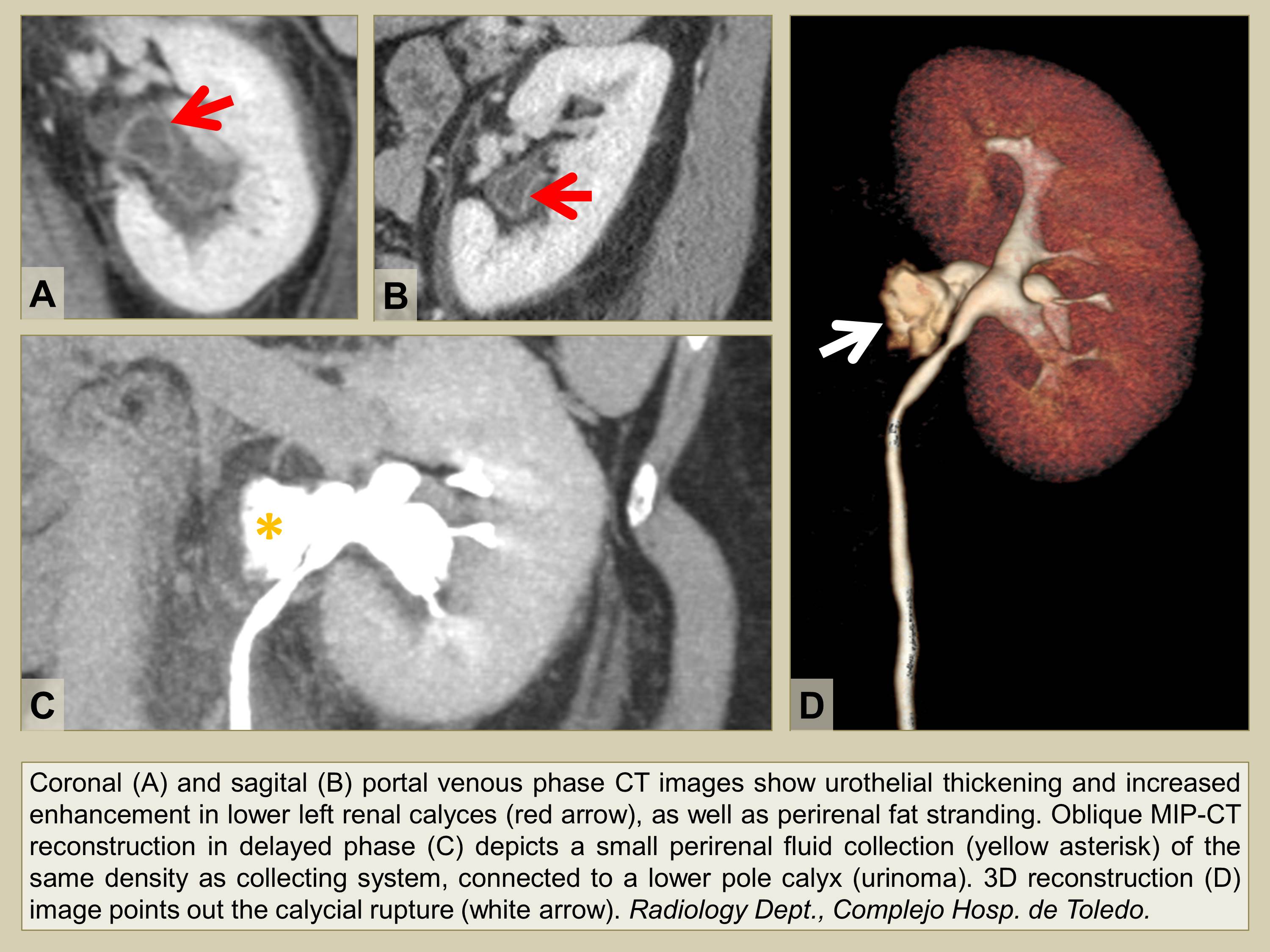Hospital: Complejo Hospitalario de Toledo.
Nº: C2019-249
Aut@r o Autores: R. Giovanetti González, C. Astor Rodríguez, M.M. Merideño García, F.X. Aragón Tejada, C. García Roch, M. Céspedes Mas.
Presentación
A 52-year-old woman presented to the emergency department for severe pain in the left iliac fossa after suffering a trauma (fall). The only altered parameter was the presence of microscopic hematuria in the urinalysis. Abdominal computed tomography (CT) showed extravasation of contrast near a left lower calyceal group and a small perinephric urinoma (with the same density as the collecting system in delayed-phase). It was treated conservatively, with spontaneous resolution of the leak in subsequent ultrasound controls.
Discusión
The rupture of the renal collecting system is a relatively common finding in emergency radiology services. The calyces (or renal fornices), due to their increased pressure, are very susceptible to break. Most cases are secondary to kidney stones, although there are other causes such as extrinsic compression, obstruction or iatrogenic. Traumatic etiology is rare and may be due to blunt or penetrating renal trauma. Contrast-enhanced abdominal CT is the imaging technique of choice in the diagnosis, with the following main findings: - Fluid collection (leaked urinoma), more commonly into the perirenal space (within the Gerota fascia). In penetrating injury, it might spread into intraperitoneal spaces. When they reach large size, they can extend to the mediastinum or the pelvis (extra or intraperitoneal). - Increased attenuation of the urinoma in delayedphase images (5-10 minutes). - Urothelial thickening and higher enhancement in affected renal calyces. - Inflammatory changes with perirenal fat stranding. The management of forniceal rupture is mainly conservative, with spontaneous reabsorption of small urinomas. If the urinoma is large, persistent, or the patient develops sepsis, it may require percutaneous drainage.
Conclusión
Renal calyces are susceptible to rupture due to their increased pressure (in our case exacerbated by trauma). Radiologists have a leading role in the diagnosis of urinary leaks and their causes.
Bibliografía
- Titton RL, Gervais DA, Hahn PF, Harishinghani MG, Arellano RS, Mueller PR. Urine Leaks and Urinomas: Diagnosis and Imaging-guided Intervention. RadioGraphics 2003, 23(5): 1133-47. - Mukaya JE, Waters C. Calyceal rupture and acute renal failure secondar


